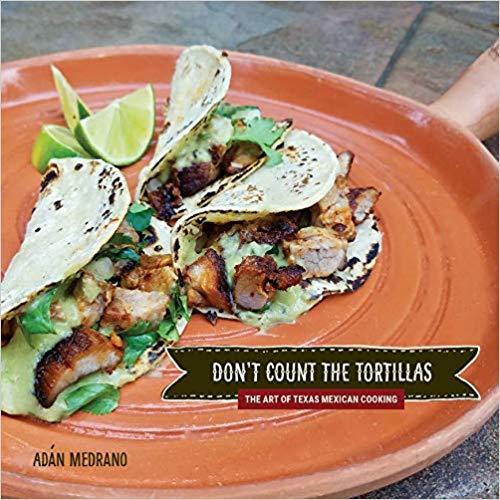


Books in series

Cacti of the Trans-Pecos and Adjacent Areas
2004

Javelinas
Collared Peccaries of the Southwest
2006

Picturing a Different West
Vision, Illustration, and the Tradition of Cather and Austin
2007

From Texas to San Diego in 1851
The Overland Journal of Dr. S. W. Woodhouse, Surgeon-Naturalist of the Sitgreaves Expedition
2007

Pecans
The Story in a Nutshell
2008

Cacti of Texas
A Field Guide, with Emphasis on the Trans-Pecos Species
2008

Plants of Central Texas Wetlands
2009

Lone Star Wildflowers
A Guide to Texas Flowering Plants
2009

Grasses of South Texas
A Guide to Identification and Value
2011

Texas, New Mexico, and the Compromise of 1850
Boundary Dispute & Sectional Crisis
1996

In the Shadow of the Carmens
Afield with a Naturalist in the Northern Mexican Mountains
2012

Land of Enchantment Wildflowers
A Guide to the Plants of New Mexico
2013

Kit Carson and the First Battle of Adobe Walls
A Tale of Two Journeys
2014

My Wild Life
A Memoir of Adventures within America’s National Parks
2014

Dancin’ in Anson
A History of the Texas Cowboys’ Christmas Ball
2014

Finding the Great Western Trail
2015

A Kineño's Journey
On Family, Learning, and Public Service
2016

The Wineslinger Chronicles
Texas on the Vine
2001

Equal Opportunity Hero
T. J. Patterson’s Service to West Texas
2017

Don't Count the Tortillas
The Art of Texas Mexican Cooking
2019

Opus in Brick and Stone
The Architectural and Planning Heritage of Texas Tech University
2020

Brujerías
Stories of Witchcraft and the Supernatural in the American Southwest and Beyond
2007

The Frontier Centennial
Fort Worth and the New West
2021

More Than Running Cattle
The Mallet Ranch of the South Plains
2023
Authors

* Author of Shooting the Breeze: Memories of a Photojournalist, November, 2024. Available on Amazon. * Author of Ever So Silent: An Emma Thorne Mystery, Honeysuckle Publishing, May, 2019. * Freelance Photojournalist. Little’s photographs have been published in most major magazines and newspapers including People, Life, Time, Newsweek, The New York Times, New York Magazine, Vanity Fair, Elle, Entertainment Weekly, Men’s Journal, Esquire, GQ, Forbes, Money, Business Week, Self, Architectural Record, Architectural Digest, Progressive Architecture, House Beautiful, House & Garden, TV Guide, Family Circle, Cosmopolitan, McCalls, Town & Country, The New York Times Magazine, Cruising World, National Geographic World, Stern, Bunte, Paris Match. * Photographer of over 300 magazine and book covers. * Selected Books: * Photographer of Fallingwater. Rizzoli Classics, 2016. Edited by Lynda Waggoner. From Bookcritics.com: “I must comment specifically on the photography. Christopher Little’s photographs capture this work in views that it would take us many many visits to accumulate and he provides perspectives and details not previously shown, (or at least not shown so beautifully) views that invite us to see more deeply ... Brilliant! Masterful!” * Photographer of Atlantic High, a sailing book, with William F. Buckley, Jr. Doubleday, Fall, 1982. The New York Times Book Review Section called the book ‘‘stunning to look at.’’ It was on the Times’ bestseller list for seventeen weeks. * Photographer of Elegant New York: The Builders and The Buildings, 1885-1915, an architecture book with John Tauranac. Abbeville Press, Fall, 1985. * Principal photographer of Fallingwater with Edgar Kaufmann, Jr.—an architecture book celebrating the Fiftieth Anniversary of the Frank Lloyd Wright house. Abbeville Press, Fall, 1986. The Boston Globe called the book ‘‘the loveliest picture book in years.’’ The Wall Street Journal called the photographs ‘‘superb.’’ Paul Goldberger, the architecture critic of the New York Times, wrote this in the Book Review Section: "The book contains the finest photographs I have seen of this much-photographed Pennsylvania house . . . The expansive views by Christopher Little alone are sufficient to thrust Mr. Little into the front rank of contemporary architectural photographers." * Author and photographer of The Rockbound Coast—Travels in Maine, a travel memoir about a summer spent cruising the coast of Maine. W.W. Norton, July, 1994. * Education: Yale, B.A. in Psychology, 1971, The Hotchkiss School, 1967, The Buckley School, 1963. * Personal: Born 24 March 1949. Married to Elizabeth Colt Kittredge. Father of Eliza, grandfather of Charlotte.
